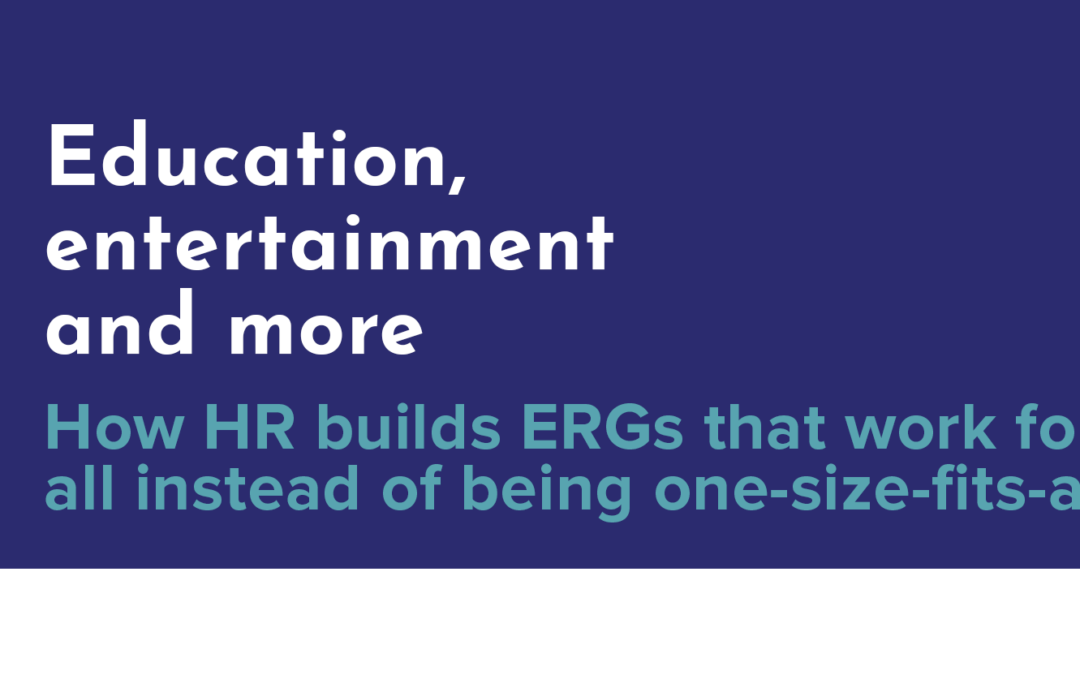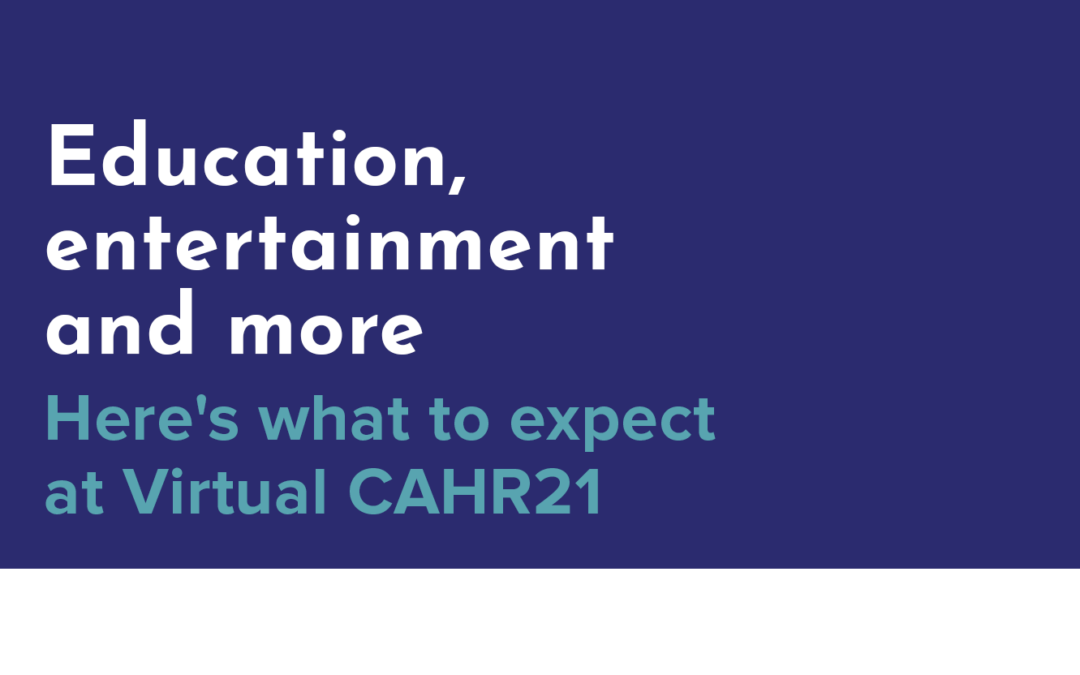Webinar Series for HR Professionals
FREE Live HR Sessions*
every week leading to CAHR21
THE ROAD TO CAHR21 Webinar Series is designed for California HR Professionals who want to further their careers by earning CE (Continuing Education) Credits. Top-quality presenters will share their knowledge on HR topics relevant to today’s competitive business climate. And they’ll get a taste of what’s to come at the 2021 California HR Conference.
PIHRA, Professionals In Human Resources Association, put the six presenting candidates and their presentations through a rigorous selection process in order to assure the best of the best building momentum for the annual conference. These presenters will not be available at CAHR21, so THE ROAD TO CAHR21 Series is the sure way to access them and benefit from their programs.
April 12, 2021 at 2:00pm
Where We Are Now: 10 Total Reward Strategies Shaped by the Events of 2020
Presented by: Scott Ripley, Employee Benefits Advisor with Arthur J. Gallagher
Education Track: Comp, Benefits, and Well-Being
As we begin to pick up the pieces from the uncertainty and disruption caused by the pandemic, HR teams are trying to strike the right balance as it relates to the war for talent. Despite spikes in unemployment, many employers find themselves continuing to fight for the best and the brightest and find an edge. While healthcare and retirement plans continue to be a crucial component of total rewards, benefit packages and employee perks have evolved.
Flexibility and work/life resources were instrumental in helping employees get through the pandemic. For many employers, these benefits are highly valued and may be difficult to take away. What can companies do to elevate their benefits program in our post-pandemic work culture? How have total rewards changed and what does the future hold?
In this session participants will learn:
- Benchmarks of what best-in-class employers are offering today
- 10 total reward strategies that will help differentiate your organization from the competition
- Challenges associated with some of the most popular benefit trends
 Scott Ripley is an employee benefits advisor with Arthur J. Gallagher. He specializes in working with organizations in the strategic design, implementation, communication and management of total rewards programs to help attract and retain talent. Scott’s practice focuses on helping companies improve employee engagement and organizational wellbeing. Scott is the past Chair of Professionals in Human Resources Association (PIHRA) South Orange County and has conducted several speaking engagements pertaining to healthcare cost-containment and company-sponsored wellbeing programs.
Scott Ripley is an employee benefits advisor with Arthur J. Gallagher. He specializes in working with organizations in the strategic design, implementation, communication and management of total rewards programs to help attract and retain talent. Scott’s practice focuses on helping companies improve employee engagement and organizational wellbeing. Scott is the past Chair of Professionals in Human Resources Association (PIHRA) South Orange County and has conducted several speaking engagements pertaining to healthcare cost-containment and company-sponsored wellbeing programs.
April 19, 2021 at 2:00pm
The Power of the Career Conversation: How to Retain, Engage and Motivate Today’s Workforce
Presented by: Serena Santillanes, MS, NCC, MCC, LPCC, Career and Professional Development Consultant, Career Journeys
Education Track: Leadership & Personal Growth
Today’s workforce has made it clear that work is not just “work” anymore! Employees are sprinting toward companies and more specifically toward leaders who grow and develop them. Career no longer means “the next raise” or “promotion.” Today’s employee wants something more and that something is called Career Development! This means a deeper dive into skill building and work that gets them excited as well as being able to fulfill their full potential. Leaders who can master the career conversation with their employees on a regular basis are the reigning winners of top teams, motivated employees, and winning results.
You might be thinking:
- I don’t have time for career conversations with my employees.
- I don’t know what to say or how to support them.
- We don’t have promotions in my department right now, I cannot offer any career development.
- Our organization doesn’t have career ladders or many options to choose from.
Don’t let these become barriers to getting, retaining, and motivating top talent. Lean on the simple and regular use of career conversations no matter how large or small your organization is or how many career opportunities you can offer. Serena Santillanes, Master Career Counselor and Consultant, has worked with organizations, employees, and leaders to help them leverage the career process in their organization. Over the years, Serena has taken proven career strategies used as a professional career counselor with thousands of clients and delivered practical tips, strategies and resources to help leaders be more confident and productive in their employee career conversations. In this session, she will share easy-to-use and ready-to-implement strategies to career coach employees all year long.
Learning Objectives:
- Learn how to support your employees’ ongoing career and professional growth
- Understand common employee career issues leaders face
- Gain simple strategies for having engaging career conversations all year long
 Serena Santillanes is the President and Founder of Career Journeys. She is a Career and Professional Development Consultant, Trainer, Facilitator and Coach devoted to providing practical solutions that transform people, teams and organizations. She helps companies create thriving work environments. Serena specializes in building emotional intelligence, mastering communication using the MBTI, and supporting managers and employees in productive career conversations. She has created leadership and employee development programs as well as team sessions for organizations like Southern California Edison, Edison International, Hulu, Disney, and the State of California to name a few.
Serena Santillanes is the President and Founder of Career Journeys. She is a Career and Professional Development Consultant, Trainer, Facilitator and Coach devoted to providing practical solutions that transform people, teams and organizations. She helps companies create thriving work environments. Serena specializes in building emotional intelligence, mastering communication using the MBTI, and supporting managers and employees in productive career conversations. She has created leadership and employee development programs as well as team sessions for organizations like Southern California Edison, Edison International, Hulu, Disney, and the State of California to name a few.
April 26, 2021 at 2:00pm
Shake Up Your Culture… One Shift at a Time
Presented by: Jeff Nischwitz, Snow Globe Shaker / President, The Nischwitz Group
Education Track: Culture
It’s time to shake up your culture, your team and your results with actionable tools to move from a culture by default to a culture by design. Everyone talks about wanting to create a culture, but the truth is that every organization already has a culture. The only question is whether it’s a culture by design or a culture by default. Too often, team members are looking up (to leadership) to define the organization’s values and culture, but every team member has the opportunity to design, develop, nurture and sustain the culture (or to kill it). At the same time, leaders are looking to their HR professionals to claim a seat at the leadership table and to be a part of the culture solution.
Jeff Nischwitz will empower you with unique perspectives on building a culture by design — a culture that will help grow your team, your organization and your outcomes. Jeff will also be sharing his innovative ideas on designing and nurturing culture where every team member is empowered for impact. Walk away with implementable tools for guiding and impacting the culture in your organization. Get ready to claim your seat at the leadership table to shake up your culture, your team and your impact!
Learning Objectives:
- Leadership shifts for engagement, impact and influence
- Enhanced impact awareness including tolerance impact
- Embracing and building an accountability and feedback culture
- Tools for putting the power back into empowerment
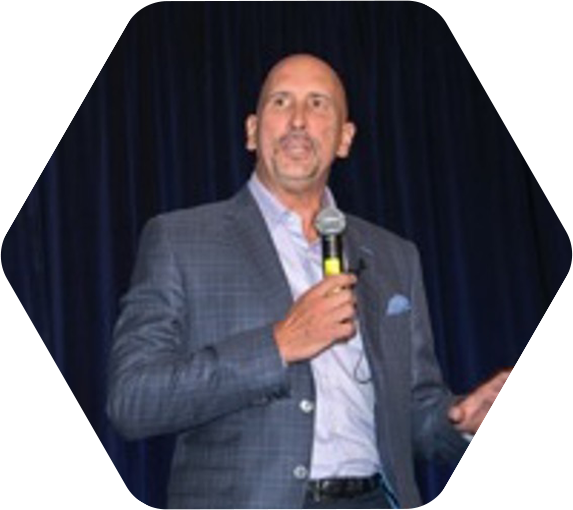 Known as a Facilitator of Truth, Snow Globe Shaker and the Leader of Shift, Jeff Nischwitz is a man on a mission – a mission to help people shift how they lead and thereby shift their leadership impact. As an international leadership, culture and team engagement speaker, Jeff Nischwitz is known for his unique perspectives, for challenging traditional thinking, and for delivering tangible shifts for leaders to grow their people, build their businesses and enhance their relationships. Jeff is the author of three books including his two most recent books: Unmask: Let Go of Who You’re “Supposed” to Be & Unleash Your True Leader (Motivational Press 2014) and Arrows of Truth: Simple Shifts for Personal Transformation (Eagle Heart Press 2017). Jeff works with a wide range of organizations on growing leaders, building engaged and empowered teams, accountability and achieving your whole other level of impact and influence.
Known as a Facilitator of Truth, Snow Globe Shaker and the Leader of Shift, Jeff Nischwitz is a man on a mission – a mission to help people shift how they lead and thereby shift their leadership impact. As an international leadership, culture and team engagement speaker, Jeff Nischwitz is known for his unique perspectives, for challenging traditional thinking, and for delivering tangible shifts for leaders to grow their people, build their businesses and enhance their relationships. Jeff is the author of three books including his two most recent books: Unmask: Let Go of Who You’re “Supposed” to Be & Unleash Your True Leader (Motivational Press 2014) and Arrows of Truth: Simple Shifts for Personal Transformation (Eagle Heart Press 2017). Jeff works with a wide range of organizations on growing leaders, building engaged and empowered teams, accountability and achieving your whole other level of impact and influence.
May 3, 2021 at 2:00pm
The 7 Components of Business Financial Intelligence for today’s HR Leader
Presented by: Paul Butler, Client Partner, Newleaf Training and Development
Education Track: Strategic HR
Over the years, we have wrestled with how best to measure organizational performance. We’ve observed how some businesses are all about the profit-and-loss account. Others focus on a strong balance sheet. Then there are those that take great pride in winning awards. Many organizations appreciate the accolades they receive from their altruistic efforts to give back to communities and causes they believe in. Some focus more on internal metrics to monitor the minuscule aspect of every level of productivity, as if the enterprise were one big soulless machine.
There are seven components of business financial intelligence. They’re interdependent and can provide the most balanced, healthy, sustainable scorecard for measuring an organization’s success.
- Customers
- Cash flow
- Profit
- Productivity
- Growth
- Teams
- Community
These seven components can provide a much more balanced scoreboard for measuring an organization’s success than just the bottom line of net profit. These seven components can sustain success over time. Four of them are primarily internal measurements (cash flow, profit, productivity, and growth), two are primarily external (customers and community), and ultimately, it’s teams of people who make this all happen.
This address will provide a framework for HR leaders to look more holistically at their organization and consider how they can monitor and reward performance in ways they’ve perhaps never imagined before. In turn, HR leaders are able to make a more strategic contribution to their organization as they utilize human resources to produce business results.
Learning Objectives:
- Relate the 7 components to your own organization
- Better understand the money-making model of your own organization
- Have clarity on how the work of HR can drive all 7 components of business performance
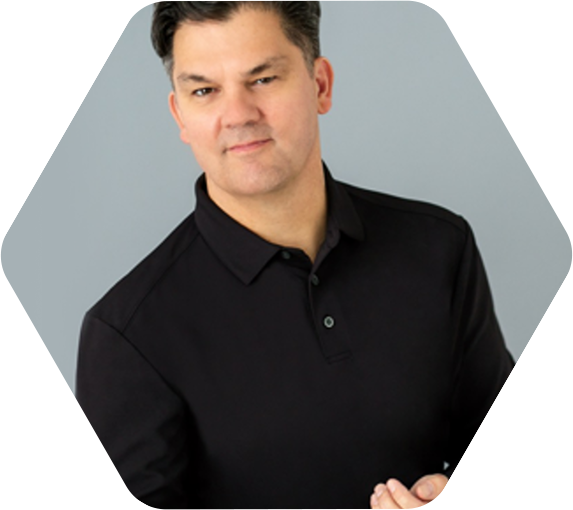 Paul Butler is a chartered global management accountant (CGMA) and a chartered management accountant (CIMA). Originally from England, he worked for Hilton International Hotels and Marriott International as a regional finance director and first came to the United States as the director of marketing and financial services for Hilton Honors, when Hilton’s worldwide headquarters was in Beverly Hills, California. In 2006, Paul started Newleaf Training and Development—a staff-training and leadership-development company that serves clients across the United States and around the world. A teacher at heart, Paul also serves as a faculty member within the business department of the Master’s University in Santa Clarita, California.
Paul Butler is a chartered global management accountant (CGMA) and a chartered management accountant (CIMA). Originally from England, he worked for Hilton International Hotels and Marriott International as a regional finance director and first came to the United States as the director of marketing and financial services for Hilton Honors, when Hilton’s worldwide headquarters was in Beverly Hills, California. In 2006, Paul started Newleaf Training and Development—a staff-training and leadership-development company that serves clients across the United States and around the world. A teacher at heart, Paul also serves as a faculty member within the business department of the Master’s University in Santa Clarita, California.
May 10, 2021 at 2:00pm
(UN) Comfortable: Building Belonging
Presented by: Tracy Jackson, President & CEO, HR E-Z, Inc.
Education Track: Inclusion & Diversity
It’s time to get (un) comfortable by having necessary conversations to address topics taking place in the world around us, centered around inclusion, bias, equity and diversity. This dynamic session will give you participants a safe space to begin exploring behaviors, language and subconscious thoughts to help identify successful methods of interacting and engaging with diverse populations in new ways. This journey is designed to ensure that there is a seat for all who deserve an opportunity to sit at the table and to create a sense of belonging for all. Modern day examples and case studies will be presented, many from my own experience as a woman of color, an executive, and the daughter of a career law enforcement officer.
We will discuss how diversity can impact profitability in an organization and how important it is to step back and look at the big picture to identify the blind spots and weaknesses of an organization, as it relates to DEI.
Participants will be able to identify some damaging language and practices in their workplace that may need to be revisited with a new lens. They will be given tools on how to start the conversation to create healthy dialogue. They will also walk away with a better understanding of how they can engage in the solution to create a sense of belonging for everyone they encounter, whether in social settings or in the workplace.
Learning Objectives:
- Understanding how implicit bias affect decisions, subconsciously. Providing insight on how to challenge the status quo to achieve sustainable change, to improve retention and attract top tier talent.
- Microaggressions: discuss what they are, provide examples, and how to respond to them
- Increase comfort in speaking about issues that relate to diversity and inclusion: Discuss many of the recent high-profile social issues from George Floyd, LGBTQIA, Black Lives Matter movement, gender, disability, etc.
 Tracy Jackson is a talented and seasoned executive business leader, and CEO of HR consulting firm HR E-Z, Inc. With over 20 years of business experience, and 15 years as an executive she was the VP of HR for Sleep Train and Golden 1 Credit Union and the Chief HR Officer for SAFE Credit Union before starting her own company to focus on the areas of HR that she’s passionate about.
Tracy Jackson is a talented and seasoned executive business leader, and CEO of HR consulting firm HR E-Z, Inc. With over 20 years of business experience, and 15 years as an executive she was the VP of HR for Sleep Train and Golden 1 Credit Union and the Chief HR Officer for SAFE Credit Union before starting her own company to focus on the areas of HR that she’s passionate about.
Tracy’s philosophy is simple. HR should be a resource for employees, so that they can give their best each day at work. She has especially found a calling for dealing with issues as they relate to diversity, inclusion, and implicit bias especially as it relates to recruiting, retaining and culture. Her goal is to create engaged workforces where all employees are able to thrive and to elevate the organization, by having difficult conversations in safe spaces. Tracy is highlighted in an Amazon best-selling book called “Balanced Accountability” by Hernani Alves, and has showcased in magazine articles.
May 17, 2021 at 2:00pm
Remote Strong: Creating and Managing an Effective Remote Workforce
Presented by: Sara Skowronski, Principal Consultant, Eos Human Resources Consulting LLC and Laura Renner, CEO, Freedom Makers
Education Track: People & Talent Management
We were unexpectedly and swiftly plunged into remote work in 2020. At first remote work seemed to have a lot of potential and many companies declared they were never going back to the office. Then fatigue set in and sentiment began to swing towards getting back to the office. In this presentation, we share how to set up a remote team for success. You will leave with concrete strategies and tactics to implement for maintaining a effective and productive remote team.
Learning Objectives:
- Myths of remote work debunked
- Why you should embrace remote work even after COVID
- How to build a successful remote workforce
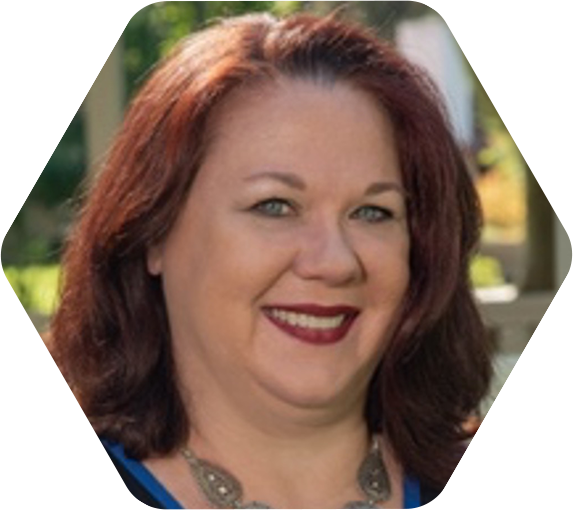 Sara Skowronski is a Senior Human Resources professional with over 18 years progressive experience in assisting in the rapid growth of several Bay Area businesses. She is the Principal Consultant at Eos Human Resources, where she and her team consult start-up and small employers who are not yet ready for a full-time Human Resources staff but are in need of access to the knowledge required to be an employer. Eos HR’s clients come from a variety of industries including finance, design, engineering, food service, and more. Prior to founding Eos HR, Sara worked alongside small business owners in operations, strategy, finance, marketing and IT. She has worked in industries ranging from telecom to banking, to staffing and hospitality management. She is certified as a Senior Professional of Human Resources (SPHR) and holds her Life and Health Insurance Producers License.
Sara Skowronski is a Senior Human Resources professional with over 18 years progressive experience in assisting in the rapid growth of several Bay Area businesses. She is the Principal Consultant at Eos Human Resources, where she and her team consult start-up and small employers who are not yet ready for a full-time Human Resources staff but are in need of access to the knowledge required to be an employer. Eos HR’s clients come from a variety of industries including finance, design, engineering, food service, and more. Prior to founding Eos HR, Sara worked alongside small business owners in operations, strategy, finance, marketing and IT. She has worked in industries ranging from telecom to banking, to staffing and hospitality management. She is certified as a Senior Professional of Human Resources (SPHR) and holds her Life and Health Insurance Producers License.
 A veteran of the U.S. Air Force, Laura Renner founded Freedom Makers out of a passion to help small business owners and military families. She graduated from the U.S. Air Force Academy with a Bachelor’s of Science in English and a minor in Chinese-Mandarin. She served as a Public Affairs Officer before leaving the Air Force to earn an International MBA from the University of Chicago Booth School of Business. Laura has started three businesses, improving her operations and systems each time. When she’s not working to grow Freedom Makers, she very much enjoys traveling, snowboarding, and having story-worthy adventures!
A veteran of the U.S. Air Force, Laura Renner founded Freedom Makers out of a passion to help small business owners and military families. She graduated from the U.S. Air Force Academy with a Bachelor’s of Science in English and a minor in Chinese-Mandarin. She served as a Public Affairs Officer before leaving the Air Force to earn an International MBA from the University of Chicago Booth School of Business. Laura has started three businesses, improving her operations and systems each time. When she’s not working to grow Freedom Makers, she very much enjoys traveling, snowboarding, and having story-worthy adventures!
*THE ROAD TO CAHR21 Webinar Series is FREE to those registered for CAHR21, and is a nominal fee ($25 per webinar) for those who aren’t attending the conference.
Visit THE ROAD TO CAHR21 to register for the Webinar Series.

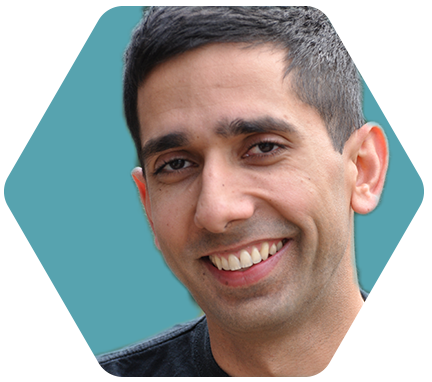 Sunjay Nath, MBA, CSP, HoF was a founding Vice President of an e-learning company based in Toronto that has gone on to become a multimillion-dollar company. He started an international speaking business when he was 19 he wasn’t even old enough to rent a car. This was particularly problematic when he would travel. As a speaker, Sunjay has travelled extensively and addressed in person well over 1,000,000 people around the world since 1995.
Sunjay Nath, MBA, CSP, HoF was a founding Vice President of an e-learning company based in Toronto that has gone on to become a multimillion-dollar company. He started an international speaking business when he was 19 he wasn’t even old enough to rent a car. This was particularly problematic when he would travel. As a speaker, Sunjay has travelled extensively and addressed in person well over 1,000,000 people around the world since 1995.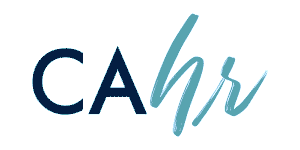

 Scott Ripley is an employee benefits advisor with
Scott Ripley is an employee benefits advisor with  Serena Santillanes is the President and Founder of
Serena Santillanes is the President and Founder of  Known as a Facilitator of Truth, Snow Globe Shaker and the Leader of Shift, Jeff Nischwitz is a man on a mission – a mission to help people shift how they lead and thereby shift their leadership impact. As an international leadership, culture and team engagement speaker, Jeff Nischwitz is known for his unique perspectives, for challenging traditional thinking, and for delivering tangible shifts for leaders to grow their people, build their businesses and enhance their relationships. Jeff is the author of three books including his two most recent books: Unmask: Let Go of Who You’re “Supposed” to Be & Unleash Your True Leader (Motivational Press 2014) and Arrows of Truth: Simple Shifts for Personal Transformation (Eagle Heart Press 2017). Jeff works with a wide range of organizations on growing leaders, building engaged and empowered teams, accountability and achieving your whole other level of impact and influence.
Known as a Facilitator of Truth, Snow Globe Shaker and the Leader of Shift, Jeff Nischwitz is a man on a mission – a mission to help people shift how they lead and thereby shift their leadership impact. As an international leadership, culture and team engagement speaker, Jeff Nischwitz is known for his unique perspectives, for challenging traditional thinking, and for delivering tangible shifts for leaders to grow their people, build their businesses and enhance their relationships. Jeff is the author of three books including his two most recent books: Unmask: Let Go of Who You’re “Supposed” to Be & Unleash Your True Leader (Motivational Press 2014) and Arrows of Truth: Simple Shifts for Personal Transformation (Eagle Heart Press 2017). Jeff works with a wide range of organizations on growing leaders, building engaged and empowered teams, accountability and achieving your whole other level of impact and influence. Paul Butler is a chartered global management accountant (CGMA) and a chartered management accountant (CIMA). Originally from England, he worked for Hilton International Hotels and Marriott International as a regional finance director and first came to the United States as the director of marketing and financial services for Hilton Honors, when Hilton’s worldwide headquarters was in Beverly Hills, California. In 2006, Paul started
Paul Butler is a chartered global management accountant (CGMA) and a chartered management accountant (CIMA). Originally from England, he worked for Hilton International Hotels and Marriott International as a regional finance director and first came to the United States as the director of marketing and financial services for Hilton Honors, when Hilton’s worldwide headquarters was in Beverly Hills, California. In 2006, Paul started  Tracy Jackson is a talented and seasoned executive business leader, and CEO of HR consulting firm
Tracy Jackson is a talented and seasoned executive business leader, and CEO of HR consulting firm  Sara Skowronski is a Senior Human Resources professional with over 18 years progressive experience in assisting in the rapid growth of several Bay Area businesses. She is the Principal Consultant at Eos Human Resources, where she and her team consult start-up and small employers who are not yet ready for a full-time Human Resources staff but are in need of access to the knowledge required to be an employer. Eos HR’s clients come from a variety of industries including finance, design, engineering, food service, and more. Prior to founding Eos HR, Sara worked alongside small business owners in operations, strategy, finance, marketing and IT. She has worked in industries ranging from telecom to banking, to staffing and hospitality management. She is certified as a Senior Professional of Human Resources (SPHR) and holds her Life and Health Insurance Producers License.
Sara Skowronski is a Senior Human Resources professional with over 18 years progressive experience in assisting in the rapid growth of several Bay Area businesses. She is the Principal Consultant at Eos Human Resources, where she and her team consult start-up and small employers who are not yet ready for a full-time Human Resources staff but are in need of access to the knowledge required to be an employer. Eos HR’s clients come from a variety of industries including finance, design, engineering, food service, and more. Prior to founding Eos HR, Sara worked alongside small business owners in operations, strategy, finance, marketing and IT. She has worked in industries ranging from telecom to banking, to staffing and hospitality management. She is certified as a Senior Professional of Human Resources (SPHR) and holds her Life and Health Insurance Producers License. A veteran of the U.S. Air Force, Laura Renner founded Freedom Makers out of a passion to help small business owners and military families. She graduated from the U.S. Air Force Academy with a Bachelor’s of Science in English and a minor in Chinese-Mandarin. She served as a Public Affairs Officer before leaving the Air Force to earn an International MBA from the University of Chicago Booth School of Business. Laura has started three businesses, improving her operations and systems each time. When she’s not working to grow Freedom Makers, she very much enjoys traveling, snowboarding, and having story-worthy adventures!
A veteran of the U.S. Air Force, Laura Renner founded Freedom Makers out of a passion to help small business owners and military families. She graduated from the U.S. Air Force Academy with a Bachelor’s of Science in English and a minor in Chinese-Mandarin. She served as a Public Affairs Officer before leaving the Air Force to earn an International MBA from the University of Chicago Booth School of Business. Laura has started three businesses, improving her operations and systems each time. When she’s not working to grow Freedom Makers, she very much enjoys traveling, snowboarding, and having story-worthy adventures!
